Best Closed Back Headphones for Recording and Tracking
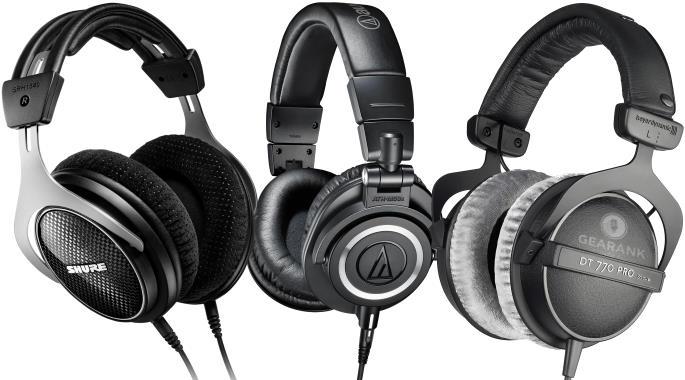
Best Closed Back Headphones Under $50
LyxPro HAS-10
- Not ideal for monitoring mids and highs
- Budget-friendly
- Boomy bass
- Great for monitoring bass guitars and kick drums
- Solid build quality
The LyxPro HAS-10 is an affordable set of closed-back headphones with a sound signature aimed towards monitoring in louder environments.
It emphasizes lower frequencies, making it viable for use by EDM producers and musicians that need to hear the bass better.
With its punchy bass, drummers are more aware of their kick drum timing. It is also a good fit for bassists who are into tight grooves and "in-the-pocket" style playing.
The downside to its bass emphasis is that it overwhelms the mids and highs. This is not advisable for those who need more treble and midrange clarity.
They also feature elements seldom seen at this price point such as aluminum construction and leather ear pads.
The HAS-10 is an affordable pair of headphones to fully kit out your studio for tracking and monitoring. They're cheap enough to get multiple units and sturdy enough to last.
Specifications
- Driver Size: 45 mm
- Magnet Type: Neodymium
- Frequency Response: 10Hz to 26kHz
- Sensitivity: 98dB (±3dB)/li>
- Weight: 10.4 oz
- Connectivity: 3 meter Cable
| Website | Source | *Rating Value |
| YouTube | Sleepy Eyez Carter | 92/100 |
| YouTube | Matt Hayes Vinyl | 90/100 |
Best Closed Back Headphones Under $150
Audio-Technica ATH-M30x
- Bass is a bit lacking
- Lower mids are colored
- Good isolation
- Collapsible design with pouch
- Mid-focused sound for vocal tracking
- Comfortable and secure clamping
The ATH-M30x is positioned at the mid-tier of the famed ATH series. Like its siblings, the M30x are over ear headphones that provide great isolation for use in tracking without spillage.
The M30x has a midrange-focused sound signature that helps singers sing in tune by hearing themselves better while tracking. Musicians who use a metronome can also benefit from the midrange bump.
While beneficial for tracking, the lows are a bit lacking, and the lower mids are colored, keep that in mind if you're planning on using this for mixing.
The ATH-M30x features a collapsible design that fits nicely inside the included pouch, this makes it good for mobile use, and they're solidly built so portability is not an issue.
With a good clamping force, comfortable earcups, and sturdy build quality, the ATH-M30x is sure to survive even the most energetic of drummers.
Specifications
- Driver Size: 40 mm
- Magnet Type: Neodymium
- Frequency Response: 15 - 22,000 Hz
- Impedance: 47 Ohms
- Sensitivity: 96 dB
- Max Input Power: 700 mW at 1 kHz
- Weight: 7.8 oz
- Connectivity:3.0 m (9.8'), straight, left-side exit
| Website | Source | *Rating Value |
| Parlorlive | Editor | 94/100 |
| Sound Guys | Jasper Lastoria | 75/100 |
Sony MDR-7506
- Not meant for long use
- Clear midrange with slight treble bump
- Useful for both tracking and mixing
- Good quality build
- Detailed bass, no bloat in frequencies
The Sony MDR-7506 is a long-running product in Sony's headphone line. It has remained mostly unchanged over its nearly 30-year run with the exception of the switch from Samarium Cobalt magnets to Neodymium early on.
It features a 40mm Neodymium Driver that gives just the right amount of low end without making the lower midrange too bloated or pushed.
They have a mostly flat midrange with a slight lift in the treble region for more detail. This, together with its closed back design, makes the MDR-7506 a Swiss Army knife in the studio. It is able to handle tracking and mix referencing tasks well. It's not the most neutral sound but it helps you hear standout frequencies during mixing.
They have great background noise isolation which is ideal for tracking. Sound leakage is kept to a minimum and is one of the quietest cans in the market with regard to ambient noise.
Speaking of closed back, comfort can be an issue because the ear cups tend to get hot when used for long periods.
Overall quality of the headband, speakers, and padding is up to the usual high standards of Sony.
The MDR-7506 has been a studio staple for decades. Its exceptional sound, versatility, and durability have earned it legendary status. It's one of the best closed back headphones for tracking and monitoring.
Specifications
- Driver Size: 40 mm
- Magnet Type: Neodymium
- Frequency Response: 10 - 20,000 Hz
- Impedance: 63 Ohms
- Sensitivity: 106 dB/W/m
- Max Input Power: 700 mW at 1 kHz
- Weight: 9.52 oz.
- Connectivity:9.8 ft. coiled cable Connection, 1/8" Gold plated stereo jack plug, and 1/4" adapter (6.35 mm)
| Website | Source | *Rating Value |
| Sound On Sound | Hugh Robjohns | 84/100 |
| Equipboard | stickster | 100/100 |
| Audiofanzine | yoTrakkz | 80/100 |
Vic Firth SIH2
- Lower volume
- Uncomfortable when used for long listening sessions
- Great isolation from external sound
- Ideal for high SPL tracking
- Protects your ears from outside noise
- Quiet operation
Vic Firth is well known for their drum sticks, so it naturally follows that the headphones they make are meant for drummers. And that is exactly what the SIH2 is all about, providing good isolation for high SPL (Sound Pressure Level) tracking applications like drumming.
It features passive isolation of -25dB from outside sounds as well as little to no sound leak. This makes it not only good for drummers, but also for loud sound sources like electric guitars, and even vocals. The SIH2 is also useful for monitoring while placing mics around drums or guitar cabs, making looking for the "sweet spot" a lot easier.
Sound wise, the Vic Firth SIH2 has a flat voicing that makes it viable for mixing. However, it is not as loud as other headphones, and this is by design because this is meant to protect the ears of the musician. Note that its tight isolation design makes it hot and uncomfortable to the ears when used for long periods.
This is a great closed back headphone to have in recording studios, ideal for those who play and record at high volume levels.
Specifications
- Driver Size: 40 mm
- Magnet Type: Mylarcon Dynamic Speaker
- Frequency Response: 20Hz-20kHz
- Impedance: 55 Ohms
- Weight: 8.4 oz
- Connectivity: Stereo plug – 3.5mm (1/8-inch) with 6.3 mm (1/4”) screw-on adapter
| Website | Source | *Rating Value |
| Parlorlive | Editor | 92/100 |
Best Headphones Under $200 - Closed Back
Beyerdynamic DT 770 PRO (80 Ohm)
- The cable is not detachable
- Balanced midrange and treble
- Smooth low-frequency bump
- Easier to integrate into home studios
- Smooth low frequency bump
The DT 770 PRO series comes in 3 options: 32 Ohms (Amazon link) for consumer use, 80 Ohms designed specifically for tracking and mixing in recording studios, and a 250 Ohms version designed specifically for use with high-power amplifiers.
It has a balanced sound with a flat midrange and a smooth low frequency bump, making it suitable for mixing. However, it is important to remember the low-end bump.
For a closed back pair of cans, this one feels quite comfortable, even after hours of use. My main gripe is its non-detachable cable, thankfully the cable doesn't feel like it will need replacing any time soon.
If you need a tracking and mixing headphone that can keep track of low frequencies such as on bass or keyboards, the DT 770 PRO is a good pick. They also happen to have a impeccable sound quality for casual listening.
Specifications
- Driver Size: 45 mm
- Frequency Response: 5 Hz to 35 kHz
- Impedance: 80 Ohms
- Sensitivity: 96 dB
- Max Input Power: 100 mW
- Weight: 270g without cable (0.55 lbs)
- Connectivity: 3m coiled cable with a gold-plated 1/8" plug and 1/4" adapter.
| Website | Source | *Rating Value |
| Sound Guys | Christian Thomas | 77/100 |
| Equipboard | gchiaren | 100/100 |
Beyerdynamic DT 770 PRO (250 Ohm)
- Pads get dirty easily
- Sibilant voice
- Non-detachable cable
- Neutral mid-range
- Good low frequency extension
- Durable
- Serviceable parts
When it was first introduced back in 1985, studios all over including the BBC1 quickly adapted the original DT770 as their preferred studio headphones. The original's long term durability, excellent balance of natural sound and great comfort made it ideal for long studio sessions. I also have the same experience with its current incarnation, the DT 770 PRO, which I encountered in a very similar environment.
When I started interning at a local studio and learning the ropes, I was floored at how their mixes sound, especially on a DT 770 Pro 250. At first, I thought they were expensive, but I was surprised when I found out that they were actually accessible. So when I started doing my own work and building up my own studio at home, they were the first on my list of purchases.
The DT 770 PRO sports 45mm drivers with Neodymium magnets. This gives it a fast response and great frequency range extension on the high and low end, it is one of the most balanced I've heard in a pair of headphones. It manages to avoid big spikes around 100Hz, a common problem among closed back headphones, and it does so while extending the lows below 50hz smoothly. The chamber tuning is one of the best in the industry. Despite being a closed-back design, it has very spacious soundstage.

The leatherette headband is soft to the touch but is surprisingly durable. Even with wear, Beyerdynamic offers replacements for most of the parts on the headphone including the headband.
The DT 770 Pros were designed to be spartan and easily serviceable. The foam pads are washable and if they eventually give out, they are replaceable. This goes the same for the headband. Beyerdynamic sells spare parts in case your unit gives out. I've had my current pair for 6 years and I've only had to replace the foam pads twice in that time. The drivers are still holding up.
What I don't like about the DT 770 250 Ohm is its very sibilant voicing. But it can also be helpful for trimming down excess trebles. Another con I have is that the velour pads are prone to getting dirty. The pads and the inner foam are dust (and pet fur) magnets. Although removing them to clean is easy, It's an added chore especially if they're studio headphones.
The DT 770 PRO is a must-have for every studio. It is a great all-rounder for tracking, mixing and even mastering when you have to check the low end balance of your tracks. The treble may be sibilant at times but once you get used to it, you will be rewarded with mixes that translate.
Specifications
- Driver Size: 45mm
- Frequency Response: 5 - 35,000 Hz
- Impedance: 250 Ohms
- Sensitivity: 96 dB
- Weight:9.52 oz.
- Connectivity:9.8 ft. coiled cable Connection, 1/8" Gold plated stereo jack plug and 1/4" adapter (6.35 mm)
| Website | Source | *Rating Value |
| Gearspace | Puffer Fish | 90/100 |
| Audiofanzine | livewidmusic | 100/100 |
| Gearank | Raphael Pulgar | 96/100 |
Audio-Technica ATH-M50x
- Proprietary locking connector
- Neutral and revealing sound
- Balanced mids and highs
- Deep bass without being too boomy
- Solid and reliable
- Vegan-friendly faux leather earcups
A darling for many studio engineers, the ATH-M50x is a staple for large, small, and mobile studios for an unmistakable sound signature that is neutral enough to make critical mix decisions with.
It has 45mm drivers that provide a tight bass response without it being out of proportion to the mids and highs. This way it truly reveals the natural state of your mix, resulting in adjustments that translate well with real-world speakers.
Everything about it feels solid and reliable, not that much different from high end headphones. Even the faux leather ear cups feel good. It fits nicely and is reasonably comfortable.
Audio-Technica is widely considered as one of the best headphone brands today, and the ATH-50x lives up to the company's quality standards.
With many hit albums produced and mixed using these headphones, there is absolutely no reason not to get these for recording.
Specifications
- Driver Size: 45 mm
- Magnet Type: Neodymium
- Frequency Response: 15 Hz to 28 kHz
- Impedance: 38 ohms
- Sensitivity: 99 dB
- Max Input Power: 1,600 mW
- Weight: 10 oz (285 g) without cable and connector
- Connectivity: 3 cables in total - Detachable 9.8' (3 m) straight, and coiled cables + a single 3.9' (1.2 m) straight cable all with 1/8" plugs + a 1/4" screw-on adapter.
| Website | Source | *Rating Value |
| Sound On Sound | Sam Inglis | 85/100 |
| Pocket-lint | Mike Lowe | 100/100 |
| Gearank | Alden Acosta | 92/100 |
Best Closed Back Headphones Under $500
Closed- back Headphones in this price range are more geared towards mixing and referencing. But they can still be used for tracking if you want headphones that sound good. Most in this category trade-off isolation for a more "airy" feel while having the stronger low frequency impact of the closed-back design. This makes them great for checking low frequency balance on your instrument or mixes.
Beyerdynamic DT 150
- Bass can be overwhelming at first
- Pads need break-in time to soften
- Transparent and airy sound
- Accurate bass response
- Comfortable fit
- Serviceable parts
The Beyerdynamic DT 150 is meant for monitoring in loud studio environments. Unlike many other high isolation headphones, the DT 150 does not sacrifice sound quality for isolation.
The 45mm Neodymium magnets provide a wide frequency range and fast bass response for accurate monitoring. This makes the bass more apparent and even overwhelming if you're not used to it. Thankfully it retains low-end clarity really well.
The midrange and high frequencies are transparent and airy, rare for closed back designs and even rarer in headphones designed for maximum isolation.
The earcup shape accommodates ears of different shapes and sizes, while the headband and pads work together to give it a comfortable fit. The pads need break-in time to soften and provide maximum isolation.
As with many Beyerdynamic headphones, they are fully serviceable with spare parts readily available, making them an ideal long-term piece of gear for studios.
If you want isolating headphones, but don't want to sacrifice sound quality for referencing, the Beyerdynamic DT150 is a great pick.
Specifications
- Driver Size: 45mm
- Magnet Type: Neodymium
- Frequency Response: 5 - 30,000 Hz
- Impedance: 250 Ohms
- Sensitivity: 97 dB
- Weight: 8.82 oz
- Connectivity: 9.8 ft. straight cable with 3-pole 1/4" stereo jack
| Website | Source | *Rating Value |
| Medium | Alex Rowe | 95/100 |
| Headphone Reviews | jageur272 | 72.2/100 |
Shure SRH1540
- Bass is a bit lacking
- Minor sound leakage
- Massive soundstage
- Relaxed listening experience
- Premium build quality and materials
- Clear and immersive sound
The SRH 1540 is Shure's top-of-the-line monitoring headphones for the studio. They utilize top-tier materials like aircraft aluminum and carbon fiber for the enclosure.
It also features a tightly matched pair of Neodymium-powered 40mm drivers with low total harmonic distortion.
These features allow the SRH1540 to have a massive soundstage, that give it almost speaker-like immersive sound, which is not usually expected from closed back headphones. This immersive sound makes it useful for mixing and mastering, in addition to quiet tracking.
It also produces high quality audio in a way that's easier on the ears than what you'd expect from closed back headphones. Together with its memory foam pads and plush lining, it provides a more relaxed and comfortable listening experience.
The downside to its clarity and massive soundstage is that the bass is a bit lacking. Noise isolation is also not as good compared to other closed-back headphones.
If you're looking for a top tier pair of headphones that strike a great balance between critical listening and pleasurable listening, the Shure SRH 1540 is the top pick.
Specifications
- Driver Size: 40 mm
- Magnet Type: Neodymium
- Frequency Response: 5 Hz – 25,000Hz
- Impedance: 46 Ohms
- Sensitivity: 99 dB
- Max Input Power: 1000 mW
- Weight:10.1 oz
- Connectivity: 6 ft dual-exit, detachable oxygen-free copper cable; Gold-plated 1/8" stereo mini jack
| Website | Source | *Rating Value |
| MusicRadar | Robbie Stamp | 100/100 |
| digitaltrends | Caleb Denison | 100/100 |
Things to Consider When Buying Headphones For Recording
- When it comes to tracking, that is recording a new track while listening to a mix in your headphones, the best option is to go for closed-back headphones because they have the best sound isolation. They prevent the mix you're listening to from spilling over into the live microphones you're recording with. They also are good at preventing other unwanted noise from seeping into what your listening. This isolation is particularly important when DJs cue the next song. And this feature makes closed back cans ideal for use as electric guitar headphones. Sound waves tend to leak even with the best closed back headphones so it's all about finding one with that priority in mind.
- Although most experts agree that open-back headphones are best for monitoring and mixing in cases where you don't want to use studio monitors, advances in headphone technology in recent years means that some closed-back headphones can also perform reasonably well in this role. Many closed back headphones like the Sony MDR-7506 are known for their critical, transparent, and detailed sound. This means that getting a single set of closed-back headphones to use for both tracking and monitoring is a viable option. The closed chamber design can be particularly useful to check your mixes for low frequency balance. This is because a closed chamber, especially well-engineered ones, can be tuned to resonate at a specific low frequency. Closed back designs also allow you to mix in private since the sound leaking from them will be minimal; perfect for producers working on the road or away from the studio. Finally, if you only want to use one pair of headphones for the whole process due to portability or budget then closed back is your best bet because their versatility. Closed back audiophile headphones may not be ideal budget headphones for mixing because of how they are tuned towards enjoyability. This doesn't mean that they are unable to perform in a mixing situation. The DT 770 Pro from Beyerdynamic is an audiophile community favorite that also works well as studio headphones. You can read more on the Open vs Closed back headphones discussion here.
- This is a very subjective topic. If you are only going to be using your headphones for less than an hour at a time then you don't have to worry too much, but if you'll be using them for many hours continuously then you'll need to consider how comfortable a set of headphones are likely to be for you. In some cases manufacturers supply data on how much force the ear cups are pushed towards each other with, but the resulting pressure will be different on different heads and ears because pressure is a function of both the force and the resulting surface area of the cups on your head. Different types of headphone weights also have different perceptions of comfort with different people. If there's a particular brand or design that's worked well for you in the past then choose something similar, otherwise read what others have to say, or if possible try actually wearing a particular set before you buy them.
- This has become a bit of a controversial topic. Some audio engineers and audiophiles say that professional headphones don't sound their best when you first take them out of the box, even the best audiophile headphones. They say that you generally need to run them for 12 to 24 hours for the drivers to 'loosen up' to their optimum level for use. They say if you don't do this then you might find they sound a bit harsh during their first few hours of use. But some people completely disagree and others have a slightly more nuanced opinion. Our advice is to do it if you want to but it doesn't seem essential anymore - in any case they will become 'broken in' after using them for a while.
- Most wireless headphones were designed for listening enjoyment. Their sound quality is catered more towards that than critical listening. Many of them employ active noise cancellation that alters the sound quality as well. Wireless headphones also often use bluetooth and have a few milliseconds of latency. This might affect the timing during tracking. I advise against using them for critical listening tasks like tracking, mixing and mastering though they are a good reference to get a "consumer side perspective" on your mix.
Tracking
Mixing
Comfort
Breaking In
Can I use wireless headphones to mix?
Best Closed Back Headphones Selection Methodology
The first edition was published in 2016. The current edition was published on April 4, 2023.
For this edition, we looked at the most current ratings and customer feedback for 42 sets of closed-back headphones. The review and rating sources we gathered totaled over 182,400 (a 16% increase over the previous edition) -- all of which were then processed via the Gearank Algorithm to produce the rating scores out of 100 you see above. We used the resulting ratings to narrow down the list to just the best of the best in each of the price brackets above. For more information about our methods see How Gearank Works.
About the Author and Contributors
Here are the key people and sources involved in this guide's production - click on linked names for information about their music industry backgrounds.
Lead Author & Researcher
Raphael Pulgar
I've been an audio engineer for 20 years specializing in rock and metal recordings. I also play guitar and produce original music for my band and other content creators.
Some of the gear I use in studio recording includes the Focusrite Scarlett 18i20, Focusrite Scarlett Solo, Samson QH4 Headphone Amp and Cloudlifter CL-1. My mics include Aston Origin, Aston Element, Shure SM57, Rode NT1, Rode PodMic and MXL V67G.
Contributors
Alexander Briones: Supplemental writing and Editing.
Jason Horton: Editing and Illustrating.
Media
Main/Top Image: By Gearank.com using photographs of the Shure SRH1540, Audio-Technica ATH-M50x and Beyerdynamic DT 770 PRO 250 Ohm headphones.
The individual product images were sourced from websites, promotional materials or supporting documentation provided by their respective manufacturers except for the Beyerdynamic DT 770 PRO Headband which was photographed by the author.



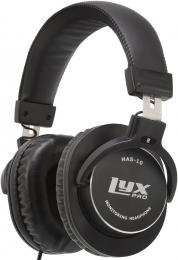
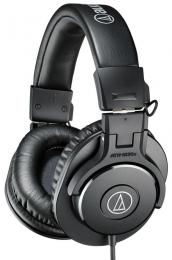
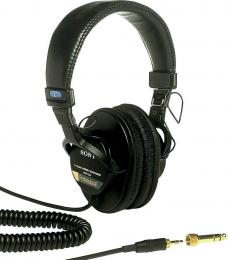
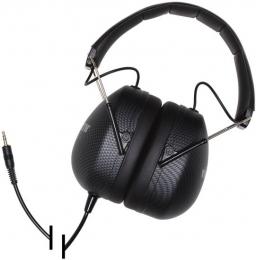
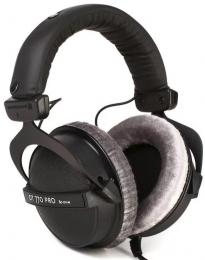
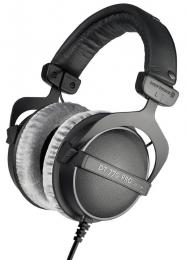
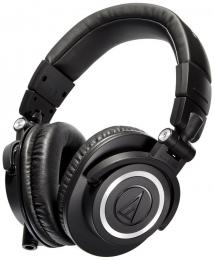
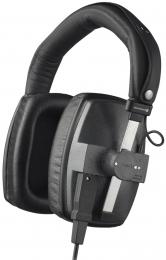
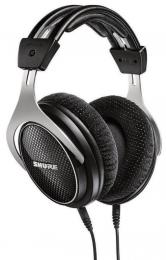
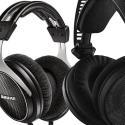
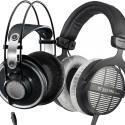
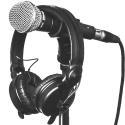


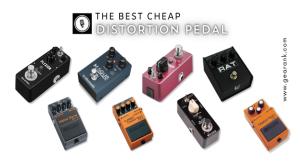
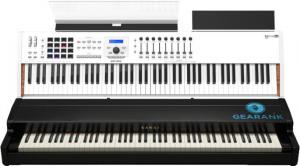
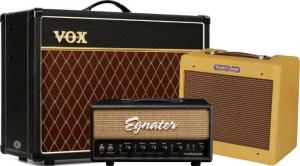
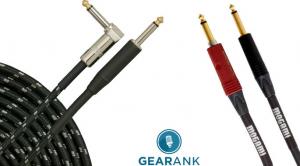
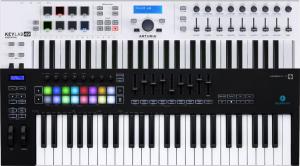
Comments
The Yamaha HPH-50 was removed
Submitted by Jason Horton on
The Yamaha HPH-50 was removed from the recommended list when we published the July 2022 Edition.
Publication of our January
Submitted by Jason Horton on
Publication of our January 2022 Edition resulted in the following headphones coming off the recommended list above, but you can still see our analysis of them:
I still recommend Sony MDR
Submitted by Audio_Engr1979 (not verified) on
I still recommend Sony MDR 7506. Over 35 years, it's still and always will be the best basic and standard monitor headphones in the whole wide world music industry.
As a result of our January
Submitted by Jason Horton on
As a result of our January 2021 update the following headphones came off the recommended list above, but you can still see our analysis of them:
The Sony MDR-7520 Headphones
Submitted by Jason Horton on
The Sony MDR-7520 Headphones have been removed from the recommended list above due to being discontinued.
The following set of
Submitted by Jason Horton on
The following set of headphones came off the recommended list above when we updated this guide in February 2020: KRK KNS 8400.
As a result of the August
Submitted by Jason Horton on
As a result of the August 2018 update to this guide, the following headphones came off our recommended list above but you can still read what we have to say about them:
Biggest issue for recording
Submitted by Frank Ciurca (not verified) on
Biggest issue for recording headphones are the small 1/8 in jack. The 1/4 in jacks work much better without the adapters.
With today's update of this
Submitted by Jason Horton on
With today's update we have removed the Sennheiser HD 280 Pro headphones from this guide but we are still recommending them in our guide to Cheap Studio Headphones.
Hey,
Submitted by Jonesy (not verified) on
Hey,
I was under the impression mixing headphones need to be open-back headphones thus I am confused why you would even mention mixing here? Im not tryna be a d*** or anything, but I am actually trying to understand if there's something that I am msising or do not know yet.
We discussed this in the
Submitted by Jason Horton on
We discussed this in the 'Things to Consider' section above, but I'll add a little to that.
The best solution for mixing is using Studio Monitors.
Next best is open-back headphones and we'll have a new guide covering this topic very soon.
Then you have the option of using closed-back headphones which is an acceptable way to go if you're working on a limited budget because you can also use them for recording tracks. You generally shouldn't record tracks with open-back headphones due to the monitor mix spilling into the new tracks. You might also want closed-back if you're in an environment where you have to keep the noise down for others.
Don't forget that technology moves forward - what may have been a 'hard rule' a few years ago is becoming a 'rule of thumb', and new developments might make it a non-issue in the future.
I forgot to post back at the
Submitted by Jason Horton on
I forgot to post back at the time, but we did publish that new guide I mentioned: The Best Open-Back Headphones for Mixing and Mastering.
Yo thanks for sharing your
Submitted by Kyle (not verified) on
Yo thanks for sharing your best closed-back studio monitoring headphones. The best closed-back mixing headphones for me are the Sennheiser HD 280 Pro because they perform incredibly well for their very cheap price tag.
But if I have to make an unbiased choice, it would be the V-MODA Crossfade M-100. They don't have an online presence as strong as the Audio Technica ATH-50X or Sony MDR 7506, but these mixing headphones are impressive. I think they should be more popular than they are now.
Which open back headphones do
Submitted by Adriana (not verified) on
Which open back headphones do you recommend for mixing?
We haven't analyzed open
Submitted by Jason Horton on
We haven't analyzed open backed headphones yet, but we will do so in a future gear guide and we'll provide a link at the top of this page when it's done.